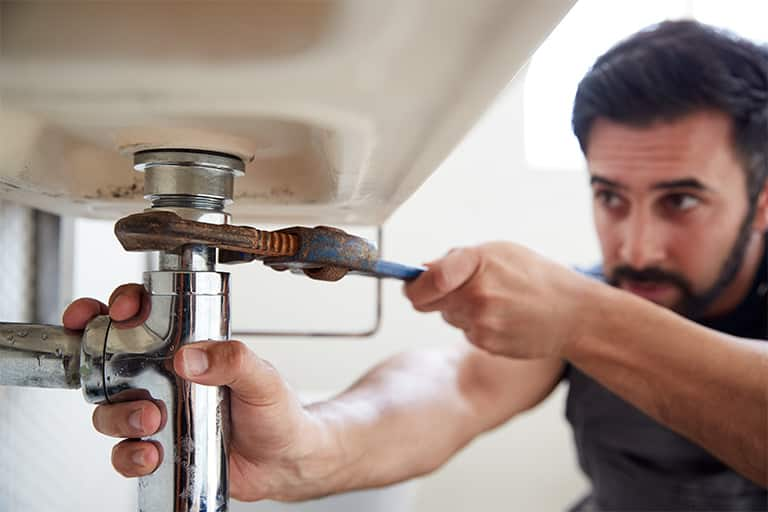We've discovered this post about Leaking water lines below on the internet and decided it made sense to relate it with you on this page.

Early discovery of dripping water lines can mitigate a prospective disaster. Some little water leakages may not be noticeable.
1. Check Out the Water Meter
Every home has a water meter. Inspecting it is a surefire way that helps you find leaks. For beginners, shut off all the water sources. Ensure no one will flush, utilize the tap, shower, run the washing equipment or dishwashing machine. From there, go to the meter and watch if it will certainly transform. Since no person is utilizing it, there must be no movements. If it relocates, that indicates a fast-moving leak. If you detect no changes, wait a hr or 2 and check back once again. This means you may have a slow leak that can also be below ground.
2. Inspect Water Consumption
If you spot abrupt adjustments, regardless of your intake being the exact same, it implies that you have leaks in your plumbing system. An unexpected spike in your expense suggests a fast-moving leak.
A constant rise every month, even with the same practices, reveals you have a sluggish leak that's likewise slowly rising. Call a plumber to thoroughly examine your property, especially if you feel a warm area on your floor with piping underneath.
3. Do a Food Coloring Examination
When it comes to water consumption, 30% comes from commodes. If the color somehow infiltrates your bowl during that time without flushing, there's a leak in between the storage tank and also dish.
4. Asses Exterior Lines
Don't forget to inspect your exterior water lines also. Must water permeate out of the link, you have a loosened rubber gasket. One little leakage can throw away bunches of water and also increase your water bill.
5. Analyze the circumstance and check
Property owners ought to make it a behavior to check under the sink counters as well as also inside closets for any kind of bad odor or mold development. These 2 warnings indicate a leakage so prompt interest is required. Doing routine inspections, also bi-annually, can conserve you from a major problem.
Much more importantly, if you recognize your residence is already old, maintain a watchful eye on your heating systems, hose pipes, pipes and so on. Look for discolorations and weakening as most pipes and appliances have a life span. They will additionally naturally wear away as a result of wear and tear. If you presume dripping water lines in your plumbing system, don't wait on it to intensify. Call a professional plumber right away so you don't end up with a terrible mess in your home.
Early detection of dripping water lines can reduce a prospective calamity. Some little water leakages may not be noticeable. Examining it is a surefire method that aids you uncover leaks. One small leakage can waste bunches of water and also increase your water costs.
If you believe leaking water lines in your plumbing system, don't wait for it to intensify.
WARNING SIGNS OF WATER LEAKAGE BEHIND THE WALL
PERSISTENT MUSTY ODORS
As water slowly drips from a leaky pipe inside the wall, flooring and sheetrock stay damp and develop an odor similar to wet cardboard. It generates a musty smell that can help you find hidden leaks.
MOLD IN UNUSUAL AREAS
Mold usually grows in wet areas like kitchens, baths and laundry rooms. If you spot the stuff on walls or baseboards in other rooms of the house, it’s a good indicator of undetected water leaks.
STAINS THAT GROW
When mold thrives around a leaky pipe, it sometimes takes hold on the inside surface of the affected wall. A growing stain on otherwise clean sheetrock is often your sign of a hidden plumbing problem.
PEELING OR BUBBLING WALLPAPER / PAINT
This clue is easy to miss in rooms that don’t get much use. When you see wallpaper separating along seams or paint bubbling or flaking off the wall, blame sheetrock that stays wet because of an undetected leak.
BUCKLED CEILINGS AND STAINED FLOORS
If ceilings or floors in bathrooms, kitchens or laundry areas develop structural problems, don’t rule out constant damp inside the walls. Wet sheetrock can affect adjacent framing, flooring and ceilings.
https://www.servicemasterbyzaba.com/blog/how-to-detect-water-leakage-in-walls/

I was shown that report on Finding hidden leaks from an acquaintance on our other website. For those who liked our page if you please make sure you remember to share it. Thank-you for your time invested reading it.